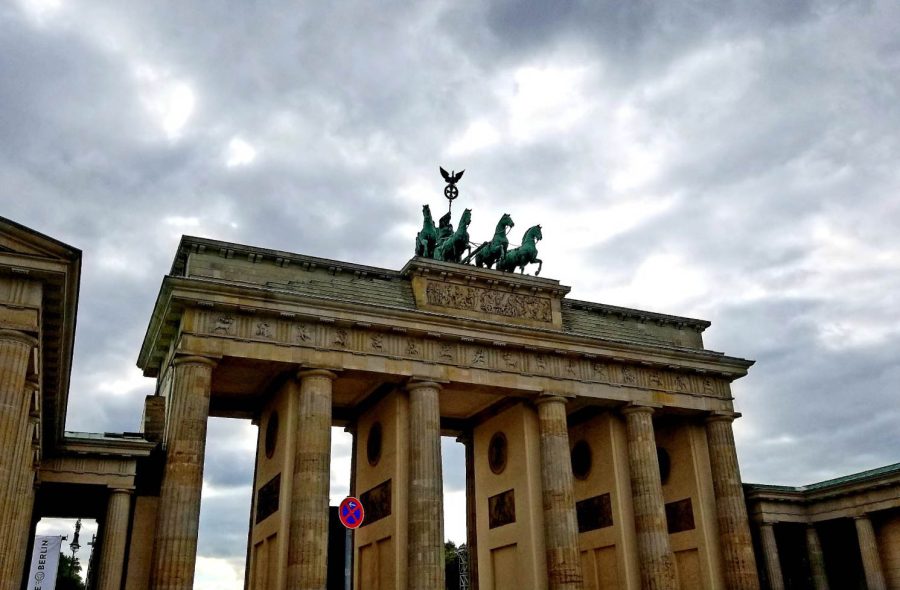There is a beauty to a city that has its history visible in layers, sporadic with an almost chaotic feel. There is a poetic charm in an asymmetrical way. The best description I can give of Berlin is that it is a city of contrasts. I kept commenting “It is so Berlin!” at various places throughout our four-day visit. There is just a feeling that overcame me as I walked the streets. That it is a city of imperfection only highlighting its beauty. I can honestly say from my personal experience that there is no city quite like Berlin.
I was surrounded by history as well as progress, one overlapping the other. The individuality of Berlin is evident in its people, scenery and architecture. It seemed there was not a building free of graffiti. In some cities this would be an eyesore, but in Berlin it is very much a part of the city’s character. The reminders of a bruised past are seen everywhere but in a subtle, reassuring way. It is important to them that they do not forget. Transparency is important to the people and the government. They have built a dome on top of the Reichstag building that allows visitors to look down onto the government working for the people. Berlin is a city that boasts a growth of acceptance and history.
I walked in awe on sidewalks littered with cigarette butts and broken glass while soaking in the graffiti and varying architecture. Marks from bullets can still be seen indented onto the side of buildings that were not fully destroyed during World War II. Along the sidewalks in front of what used to be the homes and workplaces of Jews who had been taken away, there are small golden tiles with their names and where they had been sent. It is a small reminder of a terrible time gone by.
The Fernsehturm (TV tower) looms high above to be seen from all parts of the city. It was built by the German Democratic Republic (GDR or as the Germans called it, DDR) between 1965 and 1969. A rest stop now sits where Checkpoint Alpha was once active, a border checkpoint between East and West Berlin. Cars as well as people would be searched for any contraband and escapees. The director of the International Summer Universities (ISU) program recalled his time as a child waiting for hours to go through to East Berlin to visit relatives. Visitors had to leave the city by midnight. The barracks remain closed down where they had been for years with only a couple of them opened as a museum, so visitors may see how the soldiers lived and how they searched the people and cars.
ISU set us up in a nice hostel that had a beaten-up look, yet clean and welcoming at the same time. A part of the wall with graffiti and a reminder of a time of separation sits in the courtyard. They served a large breakfast buffet of cereal, German breads and meats, hard-boiled eggs, cheese, and fruit. A hostel is an inexpensive way to travel in Europe if one doesn’t mind sharing a room with a few strangers.
We began Saturday with a city walking tour. The guide pointed out buildings that still stood yet wore telltale signs of the damage received during the war. Many apartment buildings had been built early in the city’s history with courtyards where the tenants would socialize. Today there are museums, restaurants, cafes and displays of artwork as well as graffiti and the ivy that grows along them. It is at the entryway of these courtyards where the memorial tiles for the lost Jews can be seen. It was a very humbling experience.
We explored the city on our own or in groups. I visited Alexanderplatz with another student where we saw the famous World Clock boasting the current time of 148 countries. We visited Checkpoint Charlie, a scary place at one time for East Berliners. There is a private museum displaying the various ways they tried to escape to the West, such as hollowing out engines in cars or making their own scuba gear.
On Sunday morning, we went to the East Side Gallery. It is a part of the Berlin Wall that still stands as a reminder and is a canvas for artists, most of whom painted their pieces in 1990, the year after the wall fell. For me the wall was a symbol of expression allowed to flow freely with no barriers, a symbol of healing and unification.
I will never forget my time in Berlin. It was a humbling feeling to walk the same streets that so many have before me who have not only suffered needlessly but grew into their individuality as people. It has had times of exploration as well as suppression. It is a beacon of hope because it is proof that a city can recover and become stronger after the most horrific events of their past.
Berlin: A City of Contrasts
April 4, 2019





















































